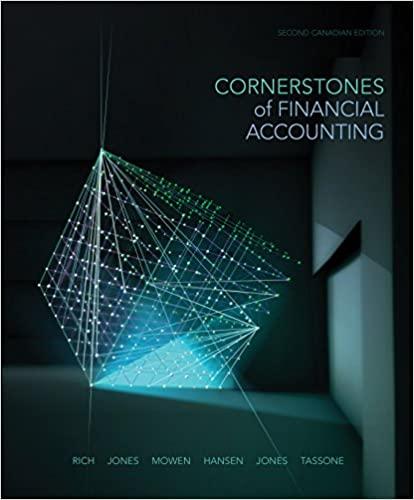Question
Use the following data to answer questions in this part: Balance sheet data Assets 20X7 20X6 Cash $2,900 $1,000 Accounts receivable 2,500 2,000 Inventory 7,400
Use the following data to answer questions in this part:
| Balance sheet data | ||
| Assets | 20X7 | 20X6 |
| Cash | $2,900 | $1,000 |
| Accounts receivable | 2,500 | 2,000 |
| Inventory | 7,400 | 8,000 |
| Property, plant, equipment | 9,200 | 9,000 |
| Accumulated depreciation | (2,900) | (2,500) |
| Total assets | $19,100 | $17,500 |
|
|
|
|
| Liabilities and Equity |
|
|
| Accounts payable | $4,700 | $4,500 |
| Interest payable | 1,500 | 1,000 |
| Dividends payable | 1,000 | 2,500 |
| Long-term debt | 4,350 | 3,700 |
| Bank note | 1,000 | 800 |
| Common stock | 3,300 | 3,000 |
| Retained earnings | 3,250 | 2,000 |
| Total liabilities and equity | $19,100 | $17,500 |
| Income statement for the year 20X7 | |
| Sales | $28,500 |
| COGS | 19,900 |
| Depreciation | 3,700 |
| Interest expense | 1,244 |
| Gain on sale of old machine | 1,150 |
| Taxes | 1,142 |
| Net income | $3,664 |
Notes:
- Dividends declared to shareholders were $850.
- New common shares were sold at par for $1020.
- Fixed assets were sold for $3500. Original cost of these assets was $2000, and $350 of accumulated depreciation has been charged to their original cost.
- The firm borrowed $200 in a 10-year bank note the proceeds of the loan were used to pay for new fixed assets.
- Depreciation for the year was $3700 (accumulated depreciation up $2900 and depreciation on sold assets $800).
- The company uses the LIFO inventory cost flow method. Had FIFO been used, inventories would have been $1,000 higher in 20X6 and $900 higher in 20X5.
- The effective tax rate for 20X6 was 30%. For all other years, the effective tax rate was 20%.
- At the beginning of 20X8, A firm issues a $10,000 bond with a 6% coupon rate, 4-year maturity, and annual interest payments when market interest rates are 7%.
Use the following data to answer questions in this part:
Balance sheet data
Assets
20X7
20X6
Cash
$2,900
$1,000
Accounts receivable
2,500
2,000
Inventory
7,400
8,000
Property, plant, equipment
9,200
9,000
Accumulated depreciation
(2,900)
(2,500)
Total assets
$19,100
$17,500
Liabilities and Equity
Accounts payable
$4,700
$4,500
Interest payable
1,500
1,000
Dividends payable
1,000
2,500
Long-term debt
4,350
3,700
Bank note
1,000
800
Common stock
3,300
3,000
Retained earnings
3,250
2,000
Total liabilities and equity
$19,100
$17,500
Income statement for the year 20X7
Sales
$28,500
COGS
19,900
Depreciation
3,700
Interest expense
1,244
Gain on sale of old machine
1,150
Taxes
1,142
Net income
$3,664
Notes:
- Dividends declared to shareholders were $850.
- New common shares were sold at par for $1020.
- Fixed assets were sold for $3500. Original cost of these assets was $2000, and $350 of accumulated depreciation has been charged to their original cost.
- The firm borrowed $200 in a 10-year bank note the proceeds of the loan were used to pay for new fixed assets.
- Depreciation for the year was $3700 (accumulated depreciation up $2900 and depreciation on sold assets $800).
- The company uses the LIFO inventory cost flow method. Had FIFO been used, inventories would have been $1,000 higher in 20X6 and $900 higher in 20X5.
- The effective tax rate for 20X6 was 30%. For all other years, the effective tax rate was 20%.
- At the beginning of 20X8, A firm issues a $10,000 bond with a 6% coupon rate, 4-year maturity, and annual interest payments when market interest rates are 7%.
- Calculate the current ratio for 20X6 for both LIFO and FIFO inventory cost flow methods. Consider all payables as current liabilities. Please explain each step of your calculation and interpret your results?
Step by Step Solution
There are 3 Steps involved in it
Step: 1

Get Instant Access to Expert-Tailored Solutions
See step-by-step solutions with expert insights and AI powered tools for academic success
Step: 2

Step: 3

Ace Your Homework with AI
Get the answers you need in no time with our AI-driven, step-by-step assistance
Get Started


